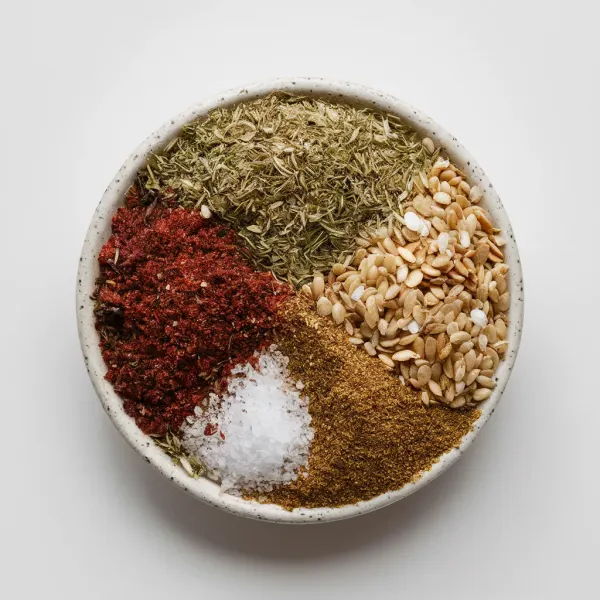
 0 minutes
0 minutesThis homemade Za'atar blend infuses the aromatic essence of the Middle East into your kitchen. It marries the earthiness of dried herbs with the nuttiness of sesame seeds and the tangy kick of sumac, making it a versatile condiment to elevate your culinary creations.

Dried Thyme, heaping
tablespoons
Dried Oregano, heaping
tablespoons
Ground Sumac, just under
tablespoons
Cumin Seeds, toasted
teaspoons
Sesame Seeds, heaping, toasted
tablespoons
to taste
1. Toasting the Seeds
Gently toast the cumin and sesame seeds in a dry skillet over medium heat until fragrant. Be sure to shake the pan occasionally to prevent burning.
2. Creating the Base
In a mortar or dedicated spice grinder, combine the toasted cumin seeds with the dried thyme and oregano. Grind these ingredients to a fine powder, which will serve as the base of your Za'atar blend.
3. Incorporating Sesame and Pepper
Add the toasted sesame seeds to your ground herb base along with a generous few grinds of freshly ground black pepper. Stir well to ensure an even mix of flavors.
4. Storing Your Za'atar
Transfer the freshly made Za'atar blend into a clean, dry jar. Seal the lid tightly to maintain freshness.
Look for premium, organic, or sustainably sourced components. Sumac should be vibrant and tart, sesame seeds should be fresh and nutty, and herbs bright and aromatic.
Aim for the right balance of sumac tanginess, herb earthiness, and sesame seed nuttiness, adjusting to taste.
Za'atar is versatile, so use it liberally on a variety of dishes, from dips to seasoned meats and vegetables.
Toast sesame seeds in a dry pan over medium heat until golden brown, but watch closely to prevent burning.
Infuse Za'atar with high-quality extra-virgin olive oil to release the flavors before using as a marinade or spread.




Comments (0)